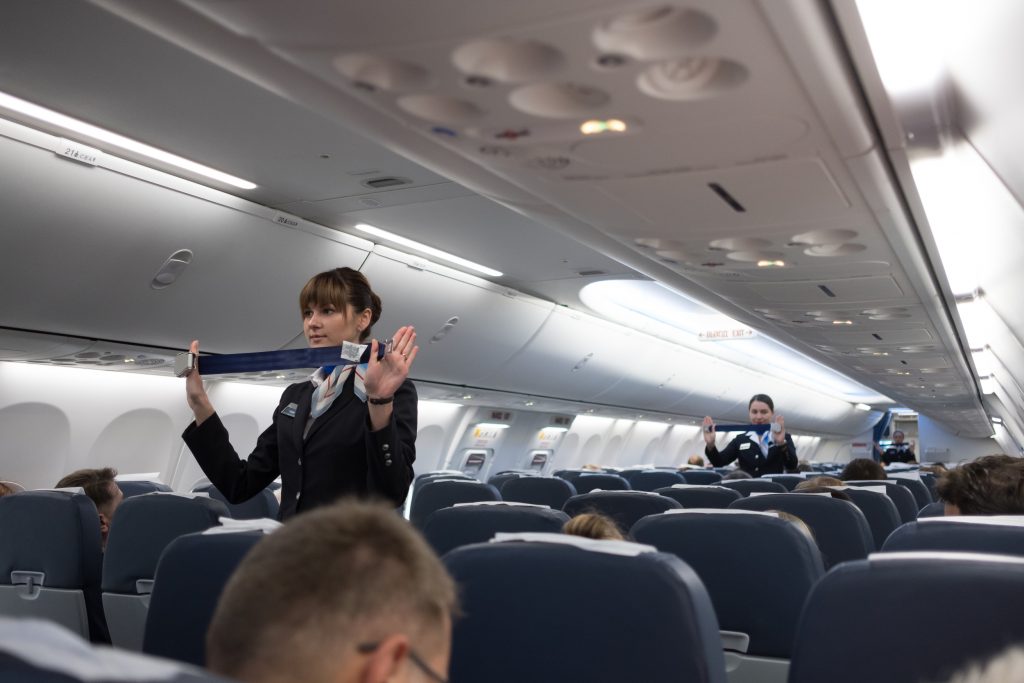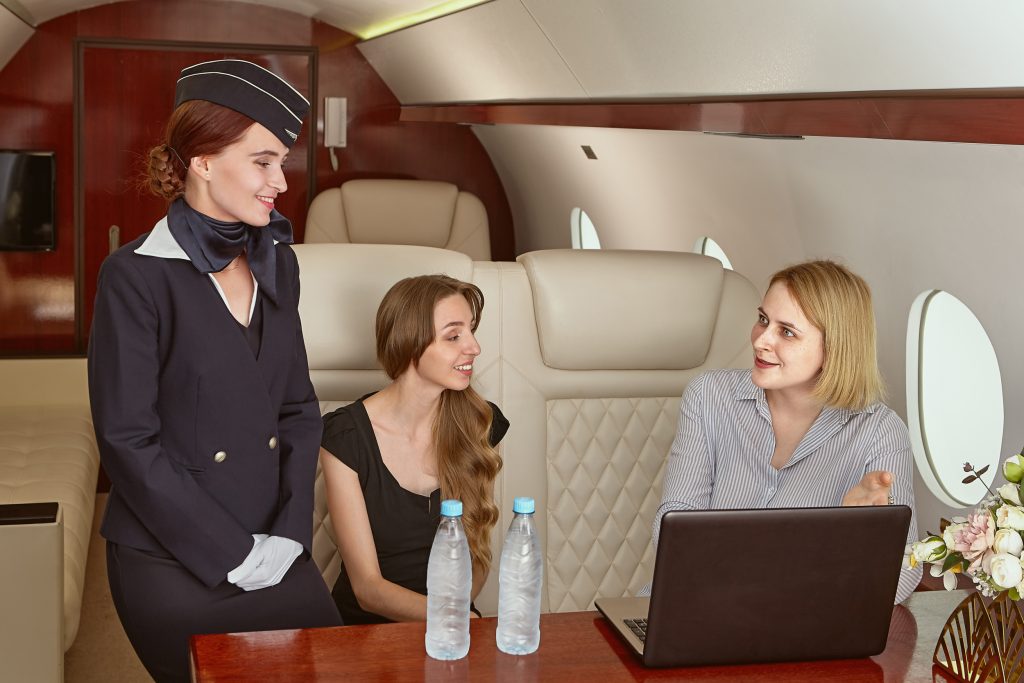Switch to:
 EN
EN  Português (PT)
Português (PT)  Español (ES)
Español (ES)
Located in many parts of the world, including Brazil, FlightSafety has become over the last decades a reference point in teaching, preparing, and training commercial and executive aircraft crews. In their offices, on the walls of the classrooms, a famous phrase is stamped like a mantra: “the best safety device in an aircraft is a well-trained crew”. The best security device for an aircraft, despite the on-board technology and all the redundancy designed for its various systems, will always be a prepared, qualified, and trained crew following the highest standards of quality and, above all, seriousness in teaching.
In addition to the pilots, we also have the very important flight attendants. These crew members, commonly seen in commercial aviation, can also be found in executive aviation. Although sometimes different from those on regular flights, their main objective is to ensure the safety procedures of embarked passengers, bringing as a consequence more comfort, well-being, and convenience.

Flight attendant: How Did They Emerged?
The profession of flight attendant emerged in the 1930s from a highly contestable restriction. When the American Ellen Church, a then young woman under thirty years of age, obtained her license to fly planes, no airline would permit women to fly their aircraft. Faced with successive refusals, and with the urge to fly (albeit accepting the restrictions and denials then imposed), Church had the opportunity to suggest to Steve Simpson, an executive at Boeing Air Transport, the hiring of nurses as flight attendants. In her view, the presence of these professionals would be essential to calm, meet, and entertain passengers who were afraid of flying. Given the context in which aviation was operating at the time, still traumatized and seen with reservations due to the aftermath of World War I, the role of flight attendants would become indispensable on flights.
Since the introduction of the role of flight attendant was exercised primarily only by women, there was a division of tasks between the crew of an aircraft, as previously all procedures relating to the treatment of passengers were solely the responsibility of the technical crew – more specifically, the commander and co-pilot. It is also worth remembering that at the time, aircraft also flew with navigators and radio operators, whose main function was to establish radio communication between the aircraft and the ground communication stations. Tasks, such as helping to load luggage and opening and closing doors, for example, were now being delegated to the newest aviation crewmembers.
Over the years, the role of flight attendant has gained even more technical breadth. These professionals no longer merely had a “cosmetic” function on board, and became true flight safety agents. The importance of the presence of flight attendants proved to be a preponderant factor in the survival of passengers in extreme situations, such as emergency evacuations, first aid, and even in the identification of serious problems that could not be seen through the cockpit – the eyes of the flight attendants are considered to be an extension of the eyes of the pilots. In executive aviation, the importance of the flight attendant on board an aircraft is no different.
Flight Attendants In Executive Aviation
Therefore, executive aviation was not left out. As in commercial aviation, in the RBAC (Brazilian Civil Aviation Regulation) number 135, a document that lists and defines all the requirements for air taxi executive aviation in Brazil, the requirement of the presence of flight attendants in aircraft with above 19 seats is compulsory — item 135,107 of the document. Based on this need, certain types of aircraft to be used in executive aviation will have the role of flight attendant as flight safety agents. Jets such as the Boeing 737 BBJ, Embraer Lineage 1000, and Airbus A319 ACJ, considered to be some of the largest types dedicated to the executive segment, will always have at least one flight attendant available — or more than one, depending on the operator’s needs, the internal configuration of seats, and other requirements that may be required by the aircraft manufacturers during their certification process with world regulatory bodies.

However, even though certain types of aircraft do not require the presence of a flight attendant on board, their operators may decide to have them on their flights for other reasons. In addition to increasing the safety of the operation, flight attendants can be responsible for helping passengers with their needs (such as preparing food and drinks, or helping to set up the cabin for a good night’s rest on transcontinental flights, for example).
Is It Possible To Have Flight Attendants On Other Aircraft?
Yes, there are also flight attendants in helicopters in air taxis, especially on flights dedicated to transporting personnel and materials to oil exploration areas on the Brazilian coast. These professionals, in addition to being mandatory under Brazilian legislation, are responsible for ensuring the safety of passengers and other crew on these missions that fly over large stretches of water without alternatives for landing in an emergency. Thus, the role of the flight attendant on these flights is crucial to ensure the survival of all occupants of the helicopter in case a landing in the open sea is necessary, as all evacuation and all post-landing procedures will be led and commanded only by qualified and trained flight attendants. .
Flight attendants can be trained and chosen at the discretion of each operator, and can therefore be experts in certain functions and actions to be performed on a flight. Even though their functions are linked to increasing passenger comfort, it is always important to emphasize the function directly linked to safety: recurrent training, several hours of study, and the constant improvement of each flight attendant indisputably results in safer flights and even more relaxed passengers. After all: if the best security devices on an aircraft are well-trained crew, nothing is better than being able to count on them as special compatriots on each voyage.
